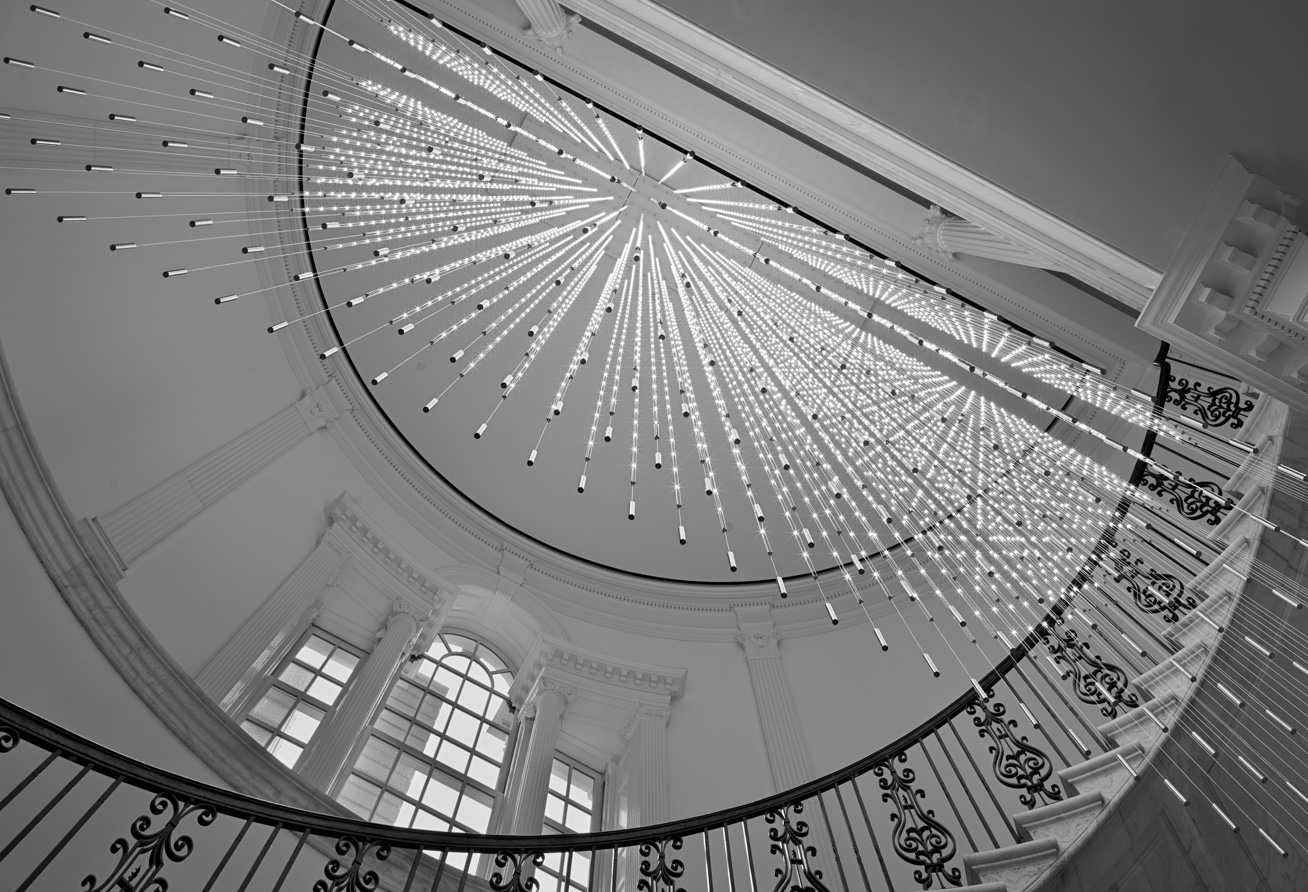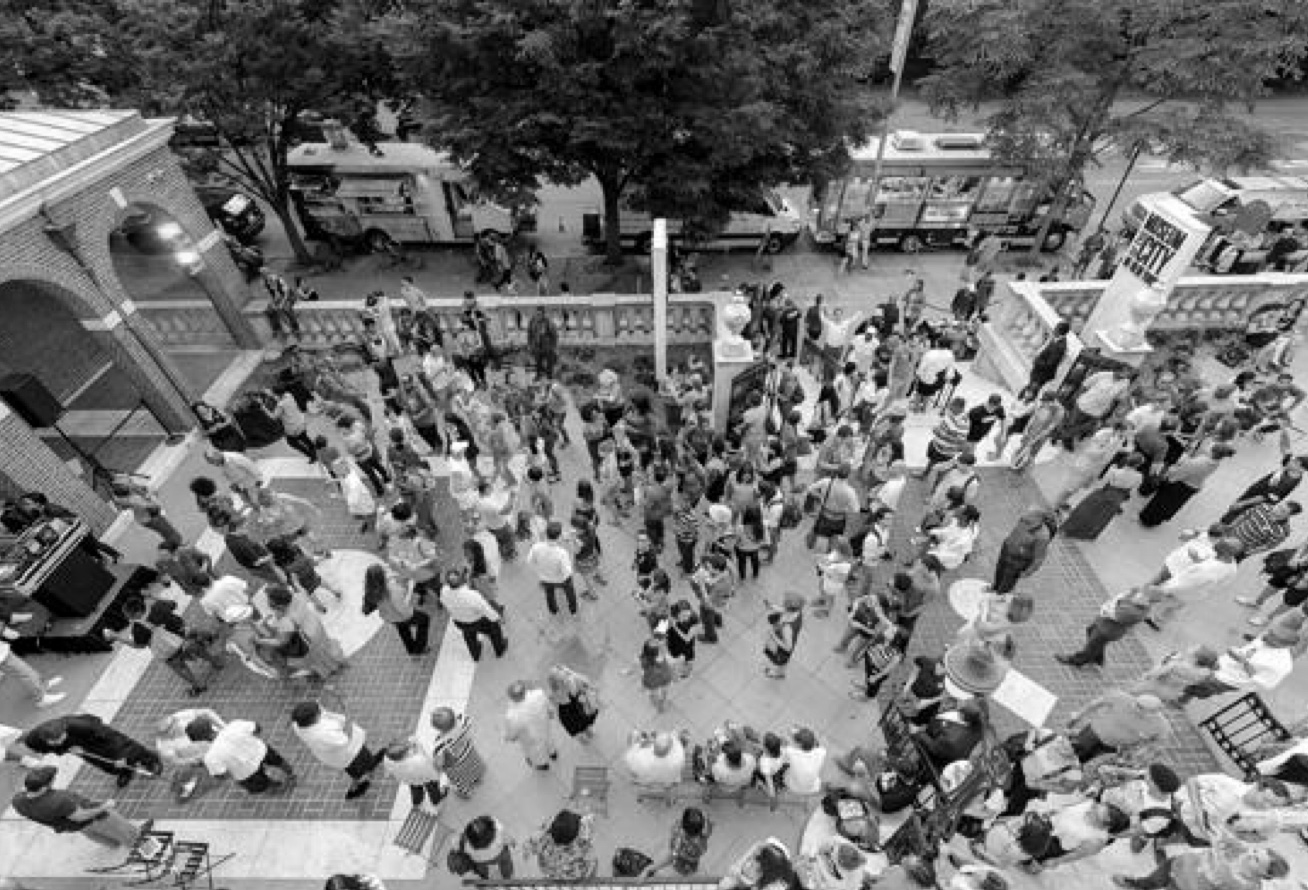Settlement Houses
Houses of Welcome
1886-1925

Back to Exhibitions
In 1886, New Yorker Stanton Coit founded the nation’s first “settlement house,” the New York Neighborhood Guild (today the University Settlement) on Forsyth Street on the Lower East Side. Inspired by the example of reformers in London’s Toynbee Hall, Coit and others moved to the city’s poorest neighborhoods to work with immigrants living in crowded, unhealthy tenement apartments. They lived as members of the community and helped local families receive health care, enroll in educational programs, join recreational clubs, and enjoy a range of social services.
Subsequent settlement workers—many of them young, college-educated women such as nurse and reformer Lillian Wald—increasingly came to believe that urban problems like poverty, unsanitary housing, and poor medical care required public solutions, and they became advocates for expanding government’s role in fighting social ills. Two new professions, social work and public health nursing, emerged from their efforts. By the 1920s, as activists came to believe that settlement houses could neither abolish urban poverty nor heal class divisions, they looked increasingly to government policies.
During the New Deal of the 1930s, New Yorkers such as Governor Herbert Lehman and First Lady Eleanor Roosevelt used earlier experiences with settlement houses to help shape federal and state laws on childcare, housing, labor relations, and public health. New York City’s settlements thus helped to define social welfare and urban liberalism in the 20th century.
Today, 37 neighborhood settlement houses with an array of programs continue to help New Yorkers in need.
Meet the Activists
Jacob Riis


Jacob Riis
Writer, photographer, and lecturer Jacob Riis helped bring attention to poverty in New York beginning in the late 19th century. An immigrant from Denmark, Riis documented the lives of impoverished immigrants in lower Manhattan—most famously in his 1890 book How the Other Half Lives. Riis’s anti-poverty reform work also led him to help establish the King’s Daughters Settlement House in 1888.
Image Info: Pach Brothers, 1903, Museum of the City of New York, Portrait Archives, F2012.58.1059.
Lillian Wald


Lillian Wald
Lillian Wald helped found the emerging professions of social work and public health nursing. Two years after graduating from nursing school in 1891, Wald and her colleague Mary Brewster started a visiting nurse service settlement house on the Lower East Side. Their work later became the Henry Street Settlement and the Visiting Nurse Service of New York. Under Wald’s continued leadership, Henry Street became a nerve center for causes ranging from labor arbitration and the abolition of child labor to racial integration and world disarmament. Wald became one of the nation’s most recognized social reformers.
Image Info: ca. 1890, Courtesy Columbia University Medical Center, Health Services Library, Visiting Nurse Service of New York Collection.
Objects & Images
Jacob A. Riis


Jacob A. Riis
Path-breaking reformer Jacob Riis used his photographs of impoverished immigrant life on the Lower East Side in illustrated lectures to call for improved housing and health. In 1888, Riis helped to establish the King’s Daughters Settlement House at 48 Henry Street, which was later renamed in his honor.
Image Info: ca. 1900, Gelatin Silver Print, Museum of the City of New York, Gift of Roger William Riis, 90.13.3.180.
A Visiting Nurse From Henry Street Settlement Treats An Infant In A Tenement Apartment


A Visiting Nurse From Henry Street Settlement Treats An Infant In A Tenement Apartment
In 1909, the Henry Street Settlement, founded by nurse and reformer Lillian Wald, began providing visiting nurses to the Metropolitan Life Insurance Company in a program of sponsored home medical visits for policy holders. By 1943, the company’s nurses were serving clients in 7,728 American and Canadian communities.
Image Info: ca. 1907, Courtesy Columbia University Medical Center, Health Services Library, Visiting Nurse Service of New York Collection.
African-american Nurse From Henry Street Settlement Visits Mother And Baby


African-american Nurse From Henry Street Settlement Visits Mother And Baby
Lillian Wald, founder of the Visiting Nurse Service, welcomed African-American nurses, who faced frequent discrimination in hiring, into the organization to serve the city’s growing black population. She also participated in the founding of the National Association for the Advancement of Colored People (NAACP), which held one of its first meetings at the Henry Street Settlement in 1909.
Image Info: ca. 1910, Courtesy Columbia University Medical Center, Health Services Library, Visiting Nurse Service of New York Collection.
Lillian Wald’s Shirtwaist And Skirt


Lillian Wald’s Shirtwaist And Skirt
Lillian Wald wore this clothing as her first uniform during her years offering medical services to immigrants on the Lower East Side, services that would later expand to become the Henry Street Settlement and the Visiting Nurse Service of New York. Henry Street visiting nurses working in poor neighborhoods were often identified by their uniforms.
Image Info: ca. 1893, Linen, Museum of the City of New York, Gift of the Visiting Nurse Service of New York, 70.31.1A-B.
Samovar Set Used For Serving Tea To Immigrant Visitors


Samovar Set Used For Serving Tea To Immigrant Visitors
Like other settlement houses, Henry Street sought to “Americanize” immigrants while cherishing the cultural “gifts” newcomers brought to New York. This Russian samovar for serving tea, one of four used in Henry Street Settlement’s dining room for more than a century, reflects Wald’s outreach to the neighborhood’s Russian-Jewish families, as well as her interest in the Russian revolutionary movement of the 1900s and 1910s.
Image Info: 1890s-1920s, Courtesy Henry Street Settlement.
Temperature Chart For A Visiting Nurse Service Patient


Temperature Chart For A Visiting Nurse Service Patient
Henry Street visiting nurses documented the progress of their home patients with charts like this one, which tracked the fever of a woman in a Monroe Street tenement.
Image Info: ca. 1909, Courtesy Visiting Nurse Service of New York.
Fly Swatter For Visiting Nurse Public Campaign Against Disease-carrying Flies In Tenement Neighborhoods


Fly Swatter For Visiting Nurse Public Campaign Against Disease-carrying Flies In Tenement Neighborhoods
Visiting nurses also served as public health educators. In 1915, nurses distributed free fly swatters to patients to alert them to the dirt and diseases carried by flies.
Image Info: ca. 1915, Courtesy Metropolitan Life Insurance Company Archive.
Children In The Lower East Side


Children In The Lower East Side
Settlement houses strove to improve life for the “children of the slums,” shown here receiving books and playing at Henry Street settlement house facilities. Activists also called for the government to help create public playgrounds, regulate housing, and end child labor.
Image Info: Jacob A. Riis, 1895-1916, Museum of the City of New York, Gift of Tenement House Department, 31.93.14; Gift of Roger William Riis, 90.13.1.387, 90.13.1.346.
Letter From Felix Warburg To Lillian D. Wald


Letter From Felix Warburg To Lillian D. Wald
Lillian Wald’s visiting nurses charged a small fee to patients who could afford to pay, but many of the house’s services were free. Wald relied on a circle of wealthy donors, many of them members of the city’s Protestant and German-Jewish financial and business elites, to support her work. This 1916 letter to Wald from banker Felix Warburg, chairman of the Henry Street Settlement Permanent Fund Committee, discusses the need to collect pledges from some of the city’s wealthiest philanthropists.
Image Info: November 11, 1916, Courtesy Visiting Nurse Service of New York.
Official Henry Street Visiting Nurse Service Nurse’s Badge With Chinese Bao (“We Are All One Family”) Symbol


Official Henry Street Visiting Nurse Service Nurse’s Badge With Chinese Bao (“We Are All One Family”) Symbol
After a trip to Asia in 1910, Wald adapted the Chinese character Bao, also symbol for justice, as an emblem for her visiting nurses.
Image Info: 1921, metal and enamel, Museum of the City of New York, Gift of the Visiting Nurse Service of New York, X2015.186.
Silver Platter Presented To Lillian Wald, With Engraved Signatures From New York Activists, Philanthropists, And Public Figures


Silver Platter Presented To Lillian Wald, With Engraved Signatures From New York Activists, Philanthropists, And Public Figures
This platter, given to Wald on her 70th birthday, was signed by some 200 of her colleagues, friends, and benefactors. The signatures reflect the overlapping worlds of social work, nursing, philanthropy, politics, and progressive reform over four decades in New York.
Image Info: 1937, Engraved silver, Courtesy Visiting Nurse Service of New York.
Key Events
| Global | Year | Local |
|---|---|---|
|
Civil War begins |
1861 | |
| 1865 |
More than half the city’s population lives in substandard tenements |
|
| Toynbee Hall, the world’s first settlement house, founded in London’s East End | 1884 |
|
|
|
1886 |
Founding of the New York Neighborhood Guild (today’s University Settlement), America’s first settlement house |
| Publication of How the Other Half Lives by Jacob Riis | 1890 |
|
| Henry Street Settlement and Visiting Nurse Service founded | 1893 | |
| 1901 | New York’s New Tenement House Law requires light, air, space, running water, and toilets in new apartments | |
| 1904 | National Child Labor Committee formed at a meeting at Carnegie Hall |


